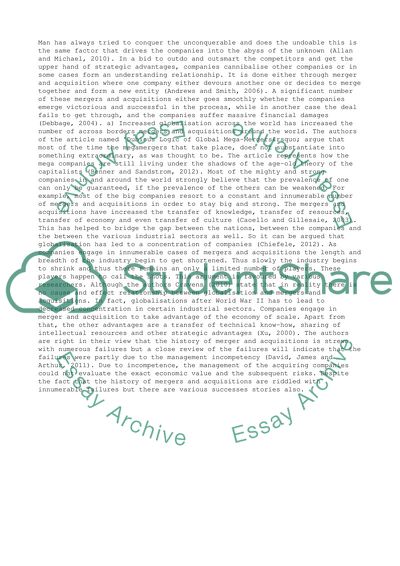Cite this document
(“Mergers and Acquisitions Essay Example | Topics and Well Written Essays - 1500 words”, n.d.)
Mergers and Acquisitions Essay Example | Topics and Well Written Essays - 1500 words. Retrieved from https://studentshare.org/business/1483753-mergers-and-acquisitions
Mergers and Acquisitions Essay Example | Topics and Well Written Essays - 1500 words. Retrieved from https://studentshare.org/business/1483753-mergers-and-acquisitions
(Mergers and Acquisitions Essay Example | Topics and Well Written Essays - 1500 Words)
Mergers and Acquisitions Essay Example | Topics and Well Written Essays - 1500 Words. https://studentshare.org/business/1483753-mergers-and-acquisitions.
Mergers and Acquisitions Essay Example | Topics and Well Written Essays - 1500 Words. https://studentshare.org/business/1483753-mergers-and-acquisitions.
“Mergers and Acquisitions Essay Example | Topics and Well Written Essays - 1500 Words”, n.d. https://studentshare.org/business/1483753-mergers-and-acquisitions.


